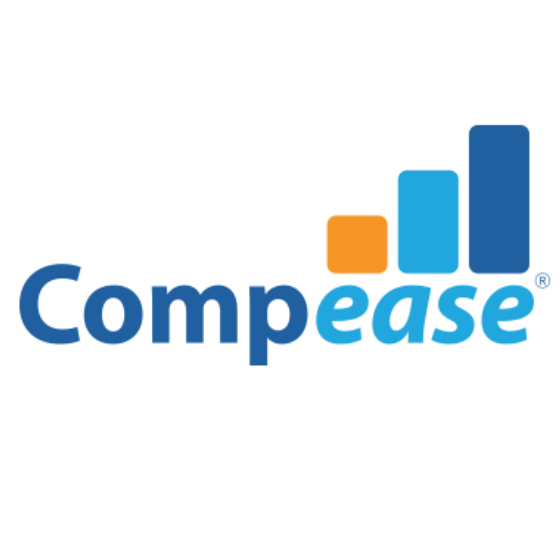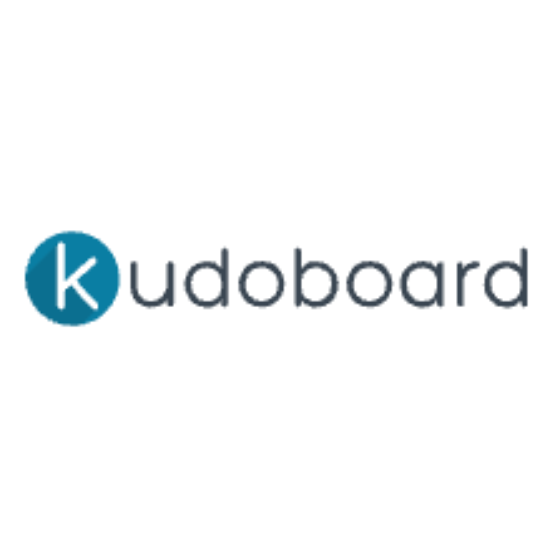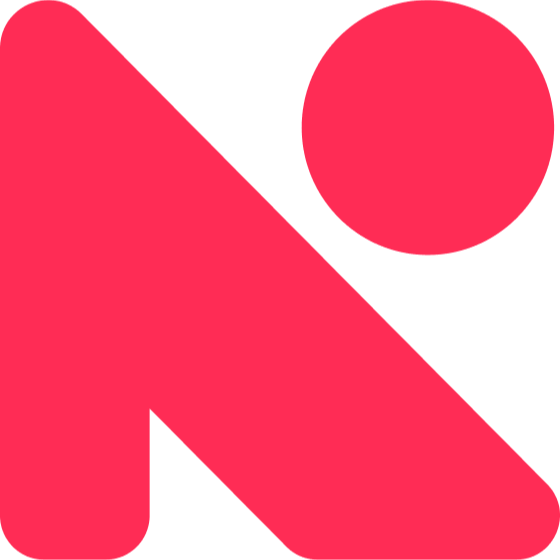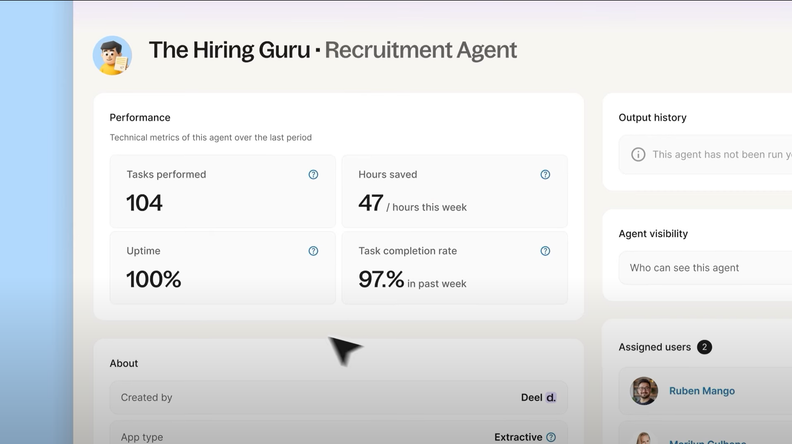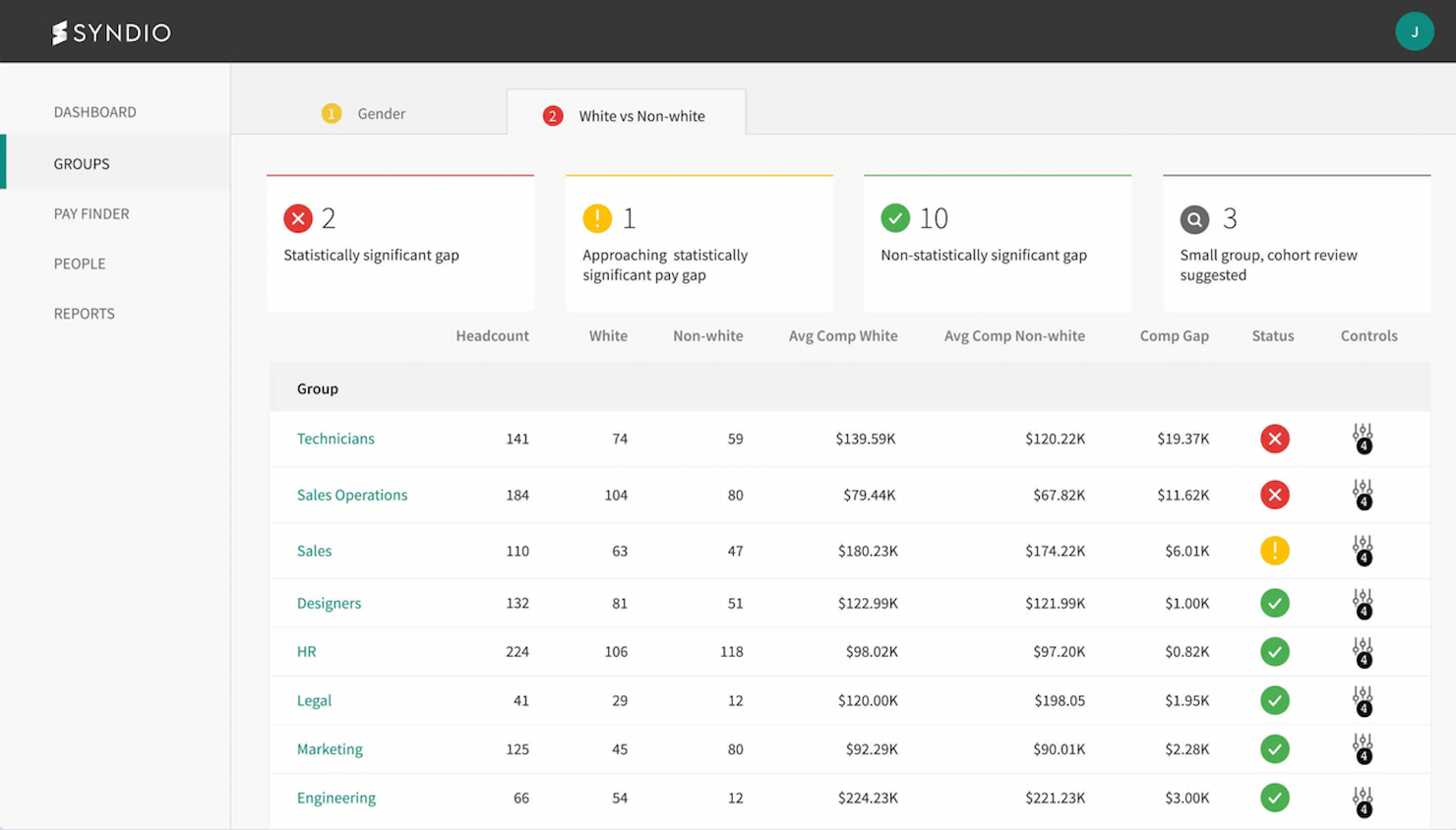10 Best Pay Equity Software Shortlist
Here's my pick of the 10 best software from the 25 tools reviewed.
The best pay equity software helps HR professionals analyze compensation data, identify and correct pay gaps, ensure compliance with evolving regulations, and build employee trust through transparency. If you’re still relying on spreadsheets or outdated tools, you probably feel the pain of messy data, difficulty proving compliance, and the overwhelming complexity of global pay equity laws.
That’s why investing in the right software matters. These tools take the guesswork out of pay analysis by automating data collection, surfacing insights, and keeping your organization audit-ready—so you can spend less time chasing errors and more time creating a fair, equitable workplace.
As someone who reviews HR software daily and works closely with HR professionals navigating these challenges, I’ve tested and compared the leading pay equity solutions on the market. In this guide, I’ll walk you through my top picks, complete with use cases, standout features, and pros and cons—so you can confidently choose a solution that actually moves the needle on pay equity.
Why Trust Our Software Reviews
We’ve been testing and reviewing HR software since 2019. As HR experts ourselves, we know how critical and difficult it is to make the right decision when selecting software.
We invest in deep research to help our audience make better software purchasing decisions. We’ve tested more than 2,000 tools for different HR management use cases and written over 1,000 comprehensive software reviews. Learn how we stay transparent & our pay equity software review methodology.
Best Pay Equity Software: Comparison Chart
This comparison chart summarizes pricing, trial, and demo details for my top pay equity software selections to help you find the best software to easily pay your staff equitably and fairly.
| Tool | Best For | Trial Info | Price | ||
|---|---|---|---|---|---|
| 1 | Best for identifying pay disparities | Not available | Pricing upon request | Website | |
| 2 | Best for global payroll and compliance | Free trial + demo available | From $29/month | Website | |
| 3 | Best pay equity analytics with global pay reports | Not available | Pricing upon request | Website | |
| 4 | Best for complex business compensation planning | Free demo available | Contact for pricing | Website | |
| 5 | Best for pay equity management, compliance, and reporting | Not available | Pricing upon request | Website | |
| 6 | Best for pay equity and DEI analyses | Free trial available | Pricing upon request | Website | |
| 7 | Best for customizable pay equity management | Free demo available | Pricing upon request | Website | |
| 8 | Best for optimizing pay equity remediation efforts | Not available | Pricing upon request | Website | |
| 9 | Best for comprehensive pay equity analyses | Not available | Pricing upon request | Website | |
| 10 | Best for strategic pay equity consulting | Free consultation available | Pricing upon request | Website |
-

Kudoboard
Visit WebsiteThis is an aggregated rating for this tool including ratings from Crozdesk users and ratings from other sites.4.8 -

Native Teams
Visit WebsiteThis is an aggregated rating for this tool including ratings from Crozdesk users and ratings from other sites.4.9 -

Rippling
Visit WebsiteThis is an aggregated rating for this tool including ratings from Crozdesk users and ratings from other sites.4.8
Best Pay Equity Software Reviews
Below, you’ll find detailed breakdowns of the top pay equity software on the market. I’ll walk you through what each tool does best, where it may fall short, and who it’s ideally suited for, so you can confidently zero in on the right fit for your team.
Compease is a compensation management tool that helps organizations analyze, design, and execute their salary administration strategies. It provides access to market-driven salary data and expert compensation consulting.
Why I picked Compease: One reason to consider Compease is its ability to identify "equal pay for equal work" discrepancies. The dashboard lets you see how employees are paid relative to their salary ranges, helping you spot and address any pay equity issues. Another valuable feature is the Merit Matrix, which lets you develop merit increase plans based on your company's compensation policies and budget. This tool helps assign equitable and consistent merit increase percentages, ensuring fair compensation practices across your organization.
Standout features & integrations:
Features include a job evaluation system, salary grades and ranges, compensation management, job descriptions, salary updates, onsite implementation and training, compensation consultation, employee engagement, retention strategies, HR process simplification, performance alignment, and budgeting tools.
Integrations aren't currently listed.
Pros and cons
Pros:
- Efficient budget allocation and salary adjustments
- Robust reporting and analytics
- Integrates performance data into compensation decisions
Cons:
- Could offer more customizability options
- Outdated interface
Deel is a comprehensive global payroll and compliance tool that offers solutions for managing international contractors and employees, handling payroll, and ensuring compliance with local labor laws and tax regulations. With its ability to operate in over 150 countries and provide support for hiring globally, Deel stands out as the best option for businesses with a global presence and diverse international payroll needs.
Why I picked Deel: Deel offers a comprehensive global payroll and compliance solution for businesses with employees in multiple countries. It stands out for its ability to handle complex international payroll and compliance requirements, while also providing country-specific benefits and co-working access. It's best for global payroll and compliance due to its extensive coverage, visa support, and ability to manage EOR and contractor relationships in various countries, making it a reliable and efficient option for businesses with a global workforce.
Standout features & integrations:
Features include global payroll and compliance, contractor management, employee onboarding, automated tax compliance, benefits administration, time tracking and expense management, legal document management, localized contracts, workforce analytics, and integration with existing HR and accounting systems.
Integrations include Brex, Hubstaff, Slack, Personio, Expensify, NetSuite, BambooHR, Skovik, Workday, Xero, QuickBooks, and Zapier.
Pros and cons
Pros:
- Flexible contract options
- Employee benefits management
- Localized payroll solutions
Cons:
- Limited customization
- Complex setup process
New Product Updates from Deel
Introducing Deel AI Workforce
Deel has launched the AI Workforce, a set of specialized agents designed to handle repetitive HR, payroll, and compliance tasks with speed and accuracy. These AI agents don’t just assist—they execute tasks from start to finish. For more information, visit Deel's official site.
Syndio is a robust platform purpose-built to help companies achieve and maintain pay equity at scale, with emphasis on global pay reporting and regulatory compliance.
Why I picked Syndio: I chose Syndio for its pay equity analytics and global pay reporting. As companies face increasing pressure to comply with evolving pay transparency regulations—especially under the EU Pay Transparency Directive (EU PTD)—Syndio stands out for its ability to deliver deep, compliant, and actionable compensation insights across both U.S. and international teams.
Standout features & integrations:
Features include Pay Finder for consistent compensation decisions, pay policy analytics to test the impact of pay strategies, automated statistical modeling to isolate legitimate pay factors, expert legal guidance for navigating compliance, and audit-ready reporting for transparency and reviews.
Integrations include Workday, SAP SuccessFactors, Oracle, ADP, BambooHR, UltiPro, Paylocity, Greenhouse, Lever, and iCIMS.
Pros and cons
Pros:
- Actionable insights
- Comprehensive reporting tools
- Real-time pay equity analysis
Cons:
- May require some setup support
- Limited customization options
- Pricing information is not transparent
New Product Updates from Syndio
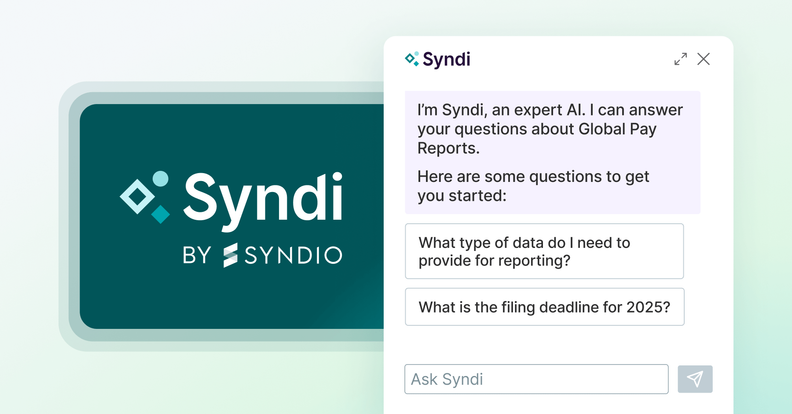
AI-Powered Compliance Assistance with Syndi from Syndio
Syndio launched Syndi, an AI tool embedded in Global Pay Reports, offering real-time compliance assistance with global pay reporting regulations, reducing the need for external consultants. For more details, visit synd.io/press-release.
Aeqium is a compensation management platform designed to help complex organizations plan and execute their pay strategies. It offers tools to analyze compensation data, manage pay structures, and ensure fair pay practices.
Why I picked Aeqium: I picked Aeqium because it gives you the tools to monitor and address pay equity gaps with clear, data-driven insights. Its real-time compensation insights feature lets you track changes live and over time, identify disparities, and view pay equity by department, manager, or role. The pay equity tools help automate audits and let you model potential changes to compensation, so you can see the impact before making decisions. Since it connects directly to your HRIS, your equity data stays up to date without manual work. These features make it easier for your team to stay compliant and transparent around pay fairness.
Standout features & integrations:
Features include compensation insights, employee portal, interactive offer letters, real-time data integration, customizable workflows, approval chains, budgeting methods, pay equity analysis, and total rewards statements.
Integrations include ADP Workforce Now, BambooHR, Gusto, Justworks, Paylocity, Quickbooks, Run Powered by ADP, and DocuSign.
Pros and cons
Pros:
- Pay equity modeling tools
- Customizable templates for offer letters
- Flexibility in configuring pay bands
Cons:
- No built-in ATS or recruiting tie-ins
- Limited HR analytics beyond compensation
New Product Updates from Aeqium
Real-Time Error Detection in Compensation Cycles with Aeqium's New Feature
Aeqium's new automated diagnostics feature identifies real-time compensation cycle errors like missing approvals and data mismatches, helping HR resolve issues before finalizing merit and bonus rounds. More details: Aeqium Blog.
CompUp is a compensation management software designed to enhance the way companies handle employee compensation. It offers comprehensive tools for compensation benchmarking, analytics, and customized reward statements, making it a robust solution for businesses looking to implement fair and effective pay structures.
Why I picked CompUp: I like that CompUp offers detailed compensation benchmarking, which allows companies to compare their pay structures with market standards. It also has advanced analytics, which identify and address pay disparities. Additionally, the platform's customizable reward statements provide clear communication to employees about their compensation, fostering trust and transparency within the organization.
Standout features & integrations:
Features include automated compensation cycle management, dynamic budgeting, real-time market data integration, detailed compensation reports, multi-currency support, personalized compensation statements, budget simulation, compliance tracking, salary revision automation, pay parity analysis, and workforce segmentation.
Integrations include various HR and payroll systems.
Pros and cons
Pros:
- AI and machine learning for better data analysis
- Templates for compensation reward letters
- Real-time compensation benchmarking
Cons:
- May not be ideal for large scaling companies
- No free trial available
OpenComp is a compensation management platform designed to help organizations make informed pay decisions. It offers tools for benchmarking salaries, managing pay equity, and accessing global compensation data, all part of its freemium plan.
Why I picked OpenComp: I picked OpenComp because it gives you the tools to actively identify and resolve pay disparities through its pay equity and DEI analysis feature. You can track gaps by gender and ethnicity and monitor progress over time. Its benchmarking tools let you compare your pay plans against global data or third-party sources, helping you stay competitive. By connecting your HR and equity systems, OpenComp provides a fuller picture of your compensation strategy.
Standout features & integrations:
Features include intelligent offers, pay strategy and ranges, global comp data benchmarking, compliance tracking, equity management, salary range creation, compensation analytics, real-time market insights, compensation philosophy design, and compensation data security.
Integrations include ADP Workforce Now, Gusto, BambooHR, Carta, and many more.
Pros and cons
Pros:
- Ability to run multiple compensation scenarios simultaneously
- Real-time data flow from HRIS and equity systems
- Comprehensive pay equity analysis tools
Cons:
- Could offer more integrations
- Limited data availability for certain niche roles
Compport helps organizations design, maintain, and visualize equitable compensation bands aligned with their pay practices.
Why I picked Compport: I chose Compport because of its ability to customize compensation bands based on multiple parameters and provide instant access to benchmarking data. It stands out for its unique features such as creating pay bands for roles without external benchmarking data and advanced access control for sensitive pay information.
Standout features & integrations:
Features include the ability to build compensation bands based on multiple parameters such as country, function, business unit, and level. It also offers instant access to internal and external benchmarking data, automatic anomaly detection, and custom job creation for roles without external benchmarks.
Integrations include Workday, SAP, Oracle, ADP, SuccessFactors, BambooHR, Ultimate Software, Kronos, Ceridian, and Paylocity.
Pros and cons
Pros:
- Advanced access controls
- Instant benchmarking data access
- Customizable pay bands
Cons:
- Limited mobile accessibility
- Initial configuration may require support
PayParity with R.O.S.A is a software solution that conducts comprehensive pay equity audits across various demographics.
Why I picked PayParity: I chose PayParity because of its advanced capabilities in identifying and resolving pay disparities. It stands out for its all-encompassing statistical regression analysis that considers multiple demographics such as gender, race/ethnicity, age, and disability. This level of detail and the ability to uncover root causes of pay inequities make it unique compared to other pay equity software.
Standout features & integrations:
Features include its comprehensive statistical regression analysis, which provides a detailed view of workforce compensation and identifies the root causes of pay disparities. The platform is also GDPR compliant and SOC 2 Type II certified, ensuring data security and compliance.
Integrations include Workday, SAP SuccessFactors, Oracle, ADP, BambooHR, UltiPro, Paylocity, Greenhouse, Lever, and iCIMS.
Pros and cons
Pros:
- GDPR and SOC 2 Type II compliant
- Identifies root causes of disparities
- Comprehensive statistical regression analysis
Cons:
- Requires significant data input
- No transparent pricing
- Limited user customization
DCI Consulting offers comprehensive pay equity solutions to ensure equitable and fair pay practices in organizations.
Why I picked DCI Consulting: I chose DCI Consulting because of its specialized expertise in pay equity and legal compliance. DCI Consulting stands out for its in-depth understanding of Title VII standards and its use of industrial/organizational psychologists and labor economists to conduct thorough analyses. Their six-step customized road map to achieving pay equity is unique and highly effective compared to other software options.
Standout features & integrations:
Features include detailed pay analyses based on Title VII standards, the development of Similarly Situated Employee Groups (SSEGs), and a customized six-step road map to pay equity. These features ensure accurate, defensible analysis and actionable insights for organizations.
Integrations include Workday, SAP SuccessFactors, Oracle, ADP, BambooHR, UltiPro, Paylocity, Greenhouse, Lever, and iCIMS.
Pros and cons
Pros:
- Thorough, defensible analyses
- Customized six-step road map
- Expertise in Title VII compliance
Cons:
- Limited software automation
- Time-consuming setup process
- May be costly for small businesses
Mercer provides comprehensive pay equity solutions to address and resolve pay inequities, ensuring fairness and compliance across global organizations.
Why I picked Mercer: I chose Mercer because of its global methodology and expert-led approach to pay equity. Mercer stands out for its ability to address pay disparities through detailed analysis and strategic adjustments, which are essential for compliance and diversity goals. Their robust tools and local compliance support make it unique compared to other pay equity software.
Standout features & integrations:
Features include detailed equal pay and pay equity analysis, highlighting and measuring unexplained pay gaps by gender and race/ethnicity. Their pay equity calculator is a standout tool that allows organizations to experiment with different adjustment strategies and assess their impact on pay gaps and budgets.
Integrations include Workday, SAP SuccessFactors, Oracle HCM, ADP, Ultimate Software, Ceridian, Kronos, BambooHR, Paycom, and Namely.
Pros and cons
Pros:
- Local compliance support
- Robust pay equity calculator
- Detailed pay equity analysis
Cons:
- Limited self-service options
- Setup may require assistance
- Annual free support hours are limited
Other Pay Equity Software
Below is a list of additional pay equity software that didn’t make it into my shortlist but are still worth considering:
- Pihr
For global pay equity compliance
- BrightMine
For advanced pay equity analytics
- Global Shares
For simplifying employee share ownership
- Payscale
For continuous pay equity monitoring
- HRSoft
For integrated pay equity analysis
- Affirmity
For connecting diversity initiatives to business outcomes
- BambooHR®
For small to medium-sized businesses
- Workday
For integrated finance and HR management
- Pave
For real-time compensation insights
- Assemble
For collaborative compensation planning
- PeopleFluent
For enterprise-level solutions
- Sysarb
User-friendly interface and experience
- Encompassing Visions
For competency-based pay equity
- Payfactors
For comprehensive compensation data
- Beqom
For total compensation management
Related HR Software Reviews
If you still haven't found what you're looking for here, check out these other related tools that we've tested and evaluated:
- HR Software
- Payroll Software
- Recruiting Software
- Employer of Record Services
- Applicant Tracking Systems
- Workforce Management Software
Pay Equity Software Selection Criteria
Selecting pay equity software involves evaluating the features and functionalities that support specific use cases, such as managing pay equity across teams, locations, and genders. To create this list, I considered common pain points, software buyer needs, and the software's overall functionalities.
As a technology analyst for HR tools, I also used the following criteria to keep my evaluations balanced and fair when considering pay equity software for this list:
Core Pay Equity Software Functionalities (25% of total score): To be considered for inclusion in this list, each solution had to fulfill these common use cases first:
- Pay gap analysis
- Compensation benchmarking
- Compliance reporting
- Data visualization
- Employee demographic analysis
Additional Standout Features (25% of total score): To help me find the best software out of numerous available options, I also kept a keen eye out for unique features, including the following:
- AI-driven insights for predictive analytics
- Customizable dashboards
- Integration with existing HR systems
- Real-time data updates
- Advanced filtering options
Usability (10% of total score): To evaluate the usability of each system, I considered the following:
- Intuitive user interface
- Drag-and-drop functionality
- Role-based access control
- Mobile accessibility
- Customizable user settings
Onboarding (10% of total score): To get a sense of each software provider's customer onboarding process, I considered the following factors:
- Availability of training videos
- Interactive product tours
- Pre-built templates
- Chatbots for instant support
- Webinars for in-depth training
Customer Support (10% of total score): To evaluate the level of customer support each vendor offered, I considered the following:
- 24/7 customer service availability
- Dedicated account managers
- Comprehensive knowledge base
- Live chat support
- Response time for support tickets
Value for Price (10% of total score): To gauge the value of each software, I considered the following factors:
- Transparent pricing models
- Flexible subscription plans
- Cost-benefit analysis
- Discounts for long-term commitments
- ROI calculators
Customer Reviews (10% of total score): Evaluating customer reviews is the final element of my selection process, which helps me understand how well a product performs in the hands of real users. Here are the factors I considered:
- Overall satisfaction ratings
- Specific feedback on ease of use
- Comments on customer support quality
- Reviews on feature effectiveness
- Testimonials on implementation experience
By carefully considering these criteria, I aim to identify pay equity software that not only meets standard requirements, but also provides additional value through innovative features, exceptional usability, and comprehensive support. Each criterion's score is tallied to determine a final star rating for each pay equity software tool, ensuring a comprehensive and fair evaluation.
How To Choose Pay Equity Software
As you work through your own unique software selection process, keep the following points in mind:
- Compliance Requirements: Ensuring your organization adheres to local, state, and federal regulations is crucial. Pay equity software should help you stay compliant with laws such as the Equal Pay Act and other anti-discrimination regulations. For example, the software should offer features that allow you to generate compliance reports and audit trails.
- Data Integration: Your pay equity software should integrate with your existing HR systems, such as payroll, performance management, and employee records. This integration is essential for accurate data analysis and reporting. For instance, if your payroll system and pay equity software are not integrated, it could lead to discrepancies in salary data, making it difficult to identify pay gaps.
- User-Friendly Interface: The software should be easy to use for HR professionals and managers who may not have a technical background. A user-friendly interface ensures users can navigate the system efficiently and make the most of its features. For example, a dashboard that provides visual representations of pay equity metrics can help users quickly understand and act on the data.
- Customizable Reporting: Different organizations have different reporting needs. Your pay equity software should offer customizable reporting options to meet your specific requirements. This feature is particularly important for organizations that need to present data to various stakeholders, such as executives, board members, or regulatory bodies. For instance, the ability to create tailored reports can help you highlight specific areas of concern or progress in your pay equity efforts.
- Scalability: As your organization grows, your pay equity software should be able to scale with you. This means it should handle an increasing amount of data and users without compromising performance. Scalability is crucial for organizations planning to expand their workforce or enter new markets. For example, a scalable solution can accommodate the addition of new employees and locations, ensuring that your pay equity analysis remains accurate and comprehensive.
Trends For Pay Equity Software
Pay equity software is evolving rapidly. Here are some key trends to watch in the coming future.
- AI-Driven Analytics are becoming more prevalent in pay equity software. These tools can identify pay disparities with greater accuracy. This trend is important for ensuring fair compensation practices.
- Real-Time Pay Audits are gaining traction. They allow companies to monitor and adjust pay practices continuously. This helps in maintaining compliance and fairness.
- Integration with Human Resource Information Systems (HRIS) is on the rise. This allows for seamless data flow between systems. It simplifies the process of tracking and managing pay equity.
- Customizable Reporting features are becoming standard. They enable organizations to generate specific reports tailored to their needs. This trend is crucial for detailed and relevant pay equity analysis.
- Employee Self-Service Portals are being incorporated into pay equity software. These portals allow employees to view and understand their compensation data. This trend promotes transparency and trust within the organization.
Pay equity software is set to become more advanced and user-friendly with more of these key trends expected to be featured among pay equity software tools.
What Is Pay Equity Software?
Pay equity software is a digital tool that helps organizations analyze employee compensation to identify and correct pay gaps. HR professionals and compensation managers use it to ensure fair pay practices, maintain compliance with equal pay laws, and build trust through transparency.
By automating pay analysis, it replaces error-prone spreadsheets, saves time on compliance reporting, and gives leaders clear visibility into where disparities exist.
Compensation isn’t just about salaries. Align pay strategies with market realities, balancing competitive offers for new hires with equity for long-standing employees to avoid wage compression.
Features of Pay Equity Software
Pay equity software is essential for organizations aiming to ensure fair and equitable compensation practices. These tools help identify and address pay disparities, ensuring compliance with legal standards and fostering a culture of fairness. Below are some of the most important features to look for in pay equity software.
- Pay Equity Analysis: This feature helps reveal the factors influencing pay, allowing organizations to make informed decisions and identify any existing pay disparities.
- Value-Based Comparison: This allows for the comparison of different jobs under the principle of "equal pay for work of equal value," ensuring that employees are compensated fairly for their contributions.
- Workforce Analytics: This feature examines and enhances diversity within the organization, guiding Diversity, Equity, and Inclusion (DEI) efforts effectively.
- Remediation Actions: Provides customized recommendations to close pay gaps, tailored to the organization's specific needs and budget.
- Reports: Essential tools for global compliance and customizable reports for leadership, helping organizations stay compliant with evolving pay equity and transparency regulations.
- Compensation Assistant: Helps sustain a bias-free workplace by ensuring good compensation decisions are made consistently.
- Data Management: Allows for the easy refinement of imported data with corrections, edits, and additions, ensuring accuracy and visibility.
- Job Evaluation: Builds objective compensation structures and compares diverse roles based on organizational value, ensuring fair pay practices.
- User Access Controls: Fine-grained access controls ensure that users have different data access needs, maintaining data security and privacy.
- Integration with Market-Based Pay Structures: Ensures that the organization's pay practices are competitive and aligned with market standards.
By leveraging these features, companies can ensure they are compliant with legal standards while also fostering a culture of fairness and equity. This, in turn, can lead to increased employee satisfaction, reduced turnover, and a more inclusive workplace.
Transparency in pay and benefits builds trust. Employees want clear insights into their full compensation, from salary to benefits and equity.
Benefits of Pay Equity Software
Pay equity software is a powerful tool designed to help organizations ensure fair and equitable pay practices. By leveraging advanced analytics and automation, these solutions provide a comprehensive approach to identifying and addressing pay disparities. Below are five main benefits of pay equity software for users and organizations.
- Faster Analysis: Pay equity software significantly reduces the time required to complete pay equity audits. Traditional manual audits can take months, but with software, organizations can perform unlimited iterations and see the impact of changes instantaneously, saving both time and money.
- Ongoing Views and Insights: Unlike static, annual analyses, pay equity software provides continuous, real-time insights into pay equity. This allows organizations to assess and address pay disparities more frequently, ensuring that compensation practices remain fair and up-to-date throughout the year.
- Enhanced Security: Pay equity software offers robust security features such as single sign-on (SSO) and user-based permissions, ensuring that sensitive compensation data is protected. This reduces the risk of data breaches and legal issues associated with manual data handling.
- Comprehensive Analysis: The software allows for multidimensional analysis, considering various factors such as gender, race, and other protected characteristics. This ensures a more accurate and holistic view of pay equity, helping organizations identify and address the root causes of pay disparities.
- Improved Compliance: Pay equity software helps organizations stay compliant with evolving pay transparency and equity legislation. It provides the tools needed to navigate complex legal requirements, reducing the risk of non-compliance and potential legal penalties.
By automating and enhancing the pay equity analysis process, these solutions not only save time and resources but also help build trust and transparency within the organization. Reliable software solutions ensure that organizations adapt and thrive in a competitive and socially conscious market.
Costs and Pricing of Pay Equity Software
Pay equity software is designed to help organizations ensure fair and equitable compensation practices by analyzing and monitoring pay disparities across various demographics such as gender, race, and ethnicity. This software is essential for companies aiming to comply with legal standards and promote equitable workplaces.
Below, we explore different pricing plans and options available for pay equity software, providing a detailed overview to help you make an informed decision.
Plan Comparison Table for Pay Equity Software
| Plan Type | Average Price | Common Features |
| Free / Trial | $0 | Basic pay equity analysis, limited reporting, and compliance tools. |
| Entry-Level | $3 - $40 per user/month (e.g., CompUp at $3/user/mo; Parity Software at $39/mo) | Automated pay equity analysis, compliance tracking, basic reporting, and dashboards. |
| Mid-Tier | Custom quotes (pricing depends on organization size and integrations) | Advanced analytics, custom reporting, integration with ATS/HR systems, and customer support. |
| Enterprise | Custom enterprise pricing (often negotiated annually) | Comprehensive pay equity audits, real-time monitoring, advanced global compliance features, and dedicated support and consulting. |
When selecting a pay equity software plan, consider the size of your organization, the complexity of your pay structures, and your specific compliance needs. Each plan offers different features and pricing to accommodate various business requirements, ensuring you can find a solution that fits your budget and goals.
Pay Equity Software FAQs
Still trying to understand how pay equity software can enhance your organization’s compensation practices? Here are some answers to frequently asked questions that should help:
What data do I need to prepare before running a pay equity analysis?
To get the most accurate results, gather employee data like job titles, salary and bonus details, performance ratings, employment dates, and demographic information (such as gender, race, or ethnicity).
Make sure your data is current, clean, and accessible—duplicates, missing fields, or ambiguous job titles can skew the software’s findings. Quality input data ensures the analysis will provide actionable insights and helps you build trust when sharing results with stakeholders.
How does pay equity software work?
Pay equity software analyzes your organization’s compensation data using advanced statistical models. It compares pay among employees by job role, location, tenure, performance, and demographics like gender or ethnicity. The tool automatically spots patterns of inequity and highlights outliers or pay gaps. With dashboards and easy-to-read reports, you’ll get guidance on corrective actions, helping you close compensation gaps and foster a fair, legally compliant workplace.
How can pay equity software help with compliance and audit readiness?
Pay equity software simplifies compliance by generating audit-ready reports and comprehensive documentation of your pay practices. It keeps detailed records of analysis, actions taken, and outcomes, making it easy to respond to regulators or auditors.
For HR teams, this helps ensure ongoing alignment with local and international pay equity laws, reduces risk of non-compliance, and demonstrates a clear commitment to fairness to both employees and external stakeholders.
Can pay equity software integrate with other HR tools?
Yes, most pay equity solutions integrate directly with major HR systems such as Workday, SAP SuccessFactors, Oracle, ADP, and others via API or data uploads. This connectivity lets you sync workforce and compensation data automatically, reducing the burden of manual work and ensuring up-to-date analysis. Integrations also support smoother workflows across talent management, payroll, and analytics, making it easier for your team to maintain consistent, reliable data.
How often should pay equity analysis be conducted?
You should run pay equity analysis at least annually, often alongside performance reviews or compensation planning cycles. However, more frequent analysis is helpful after mergers, big hiring rounds, organizational changes, or pay structure updates.
Regular reviews help you stay compliant, respond promptly to shifts in your workforce, and demonstrate ongoing commitment to pay equity to employees and regulators.
What are common challenges when implementing pay equity software?
The main challenges are poor data quality, difficulties integrating with older HR systems, and securing buy-in from all stakeholders. You might also encounter resistance to change or concerns about transparency.
To overcome these, communicate benefits clearly, set specific goals for equity, invest in data cleanup, and offer training for users. Aligning leadership and HR teams early can make implementation smoother and more successful.
Does pay equity software support global compliance for multinational organizations?
Yes, leading pay equity platforms are designed for global businesses and can adapt to local laws and international standards. They allow you to segment data by country or region, manage multiple currencies, and produce compliance reports tailored to different regulatory environments. This global support helps your organization maintain consistent pay equity standards and demonstrate compliance, no matter where your employees work.
Can pay equity software help address both gender and racial pay gaps?
Yes, pay equity software can analyze compensation gaps for multiple demographics, including gender, race, and ethnicity. Most tools let you break down data by various factors so you can identify disparities, track improvements, and create action plans that target several equity dimensions at once. This gives you a holistic view of pay equity and supports diversity, equity, and inclusion goals across your organization.
What’s Next?
To remain up to date on all the latest in people management, subscribe to our newsletter for leaders and managers. You'll receive insights and offerings tailored to leaders and HR professionals straight to your inbox.

